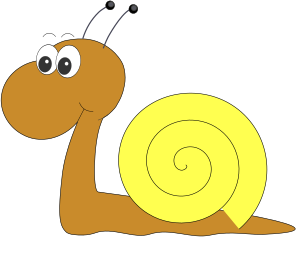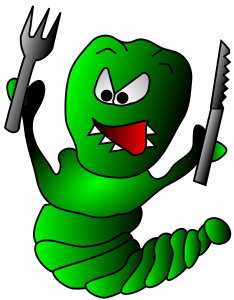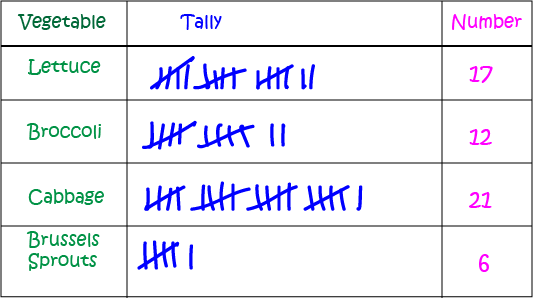Prekinder to Grade 2 Mathematics
Tally Marks
Tally Marks
Tally Marks help you to keep track of how many times something happens. You might want to count the number of times you get a \(6\) when you roll a die, or keep track of
the answers to questions on a survey.
Tally marks are easy to use. They're just marks we write down. One vertical stroke means "one", and we keep them together in groups of five. Let's have a look at the tally marks from \(1\) to \(4\):

To make a group of five tally marks, we draw lines for our first four marks, and then draw a diagonal line across them like this:

We don't have to stop once we've reached five. We just keep adding strokes after our group of five until we're ready for our next group of five, and so on. Here are the tally marks for the numbers from \(6\) to \(9\):

Remember, every time you get to the fifth number in a group, draw it as a diagonal line across the first four. This makes it easy to find groups of five when you're adding up the total.
Examples:
Let's have a look at a couple of examples of tally marks for bigger numbers:


Survey Results


Here is a table showing the results of Gus' survey:

Each time a caterpillar told Gus that their favourite vegetable was lettuce, broccoli, cabbage or brussels sprouts, Gus added a tally mark to the corresponding row of the table. After he had interviewed all of the caterpillars, he totalled up his tallies, and found that \(21\) caterpillars liked cabbage best, \(17\) liked lettuce best, \(12\) liked broccoli and only \(6\) liked brussels sprouts best. The problem is that Gus doesn't particularly like brussels sprouts either, so he doesn't really want to plant nothing but them.
Why don't you do what Gus did and survey your friends about something like their favourite colour, or their favourite movie? Use a table and tally marks to keep track of your results. You never know what you might find out!
Description
This mini book covers the core of Math for Foundation, Grade 1 and Grade 2 mathematics including
- Numbers
- Addition
- Subtraction
- Division
- Algebra
- Geometry
- Data
- Estimation
- Probability/Chance
- Measurement
- Time
- Money
- and much more
This material is provided free of cost for Parent looking for some tricks for their Prekinder, Kinder, Prep, Year 1 and Year 2 children
Audience
Grade 1/Year 1, Grade 2/Year 2, Prep, Foundation, Kinder and Pre-Kinder
Learning Objectives
These lessons are for kids aged 4-8 with the core objective to expose their brains to concepts of addition, subtraction, division, algebra and much more.
Author: Subject Coach
Added on: 6th Apr 2018
You must be logged in as Student to ask a Question.
None just yet!